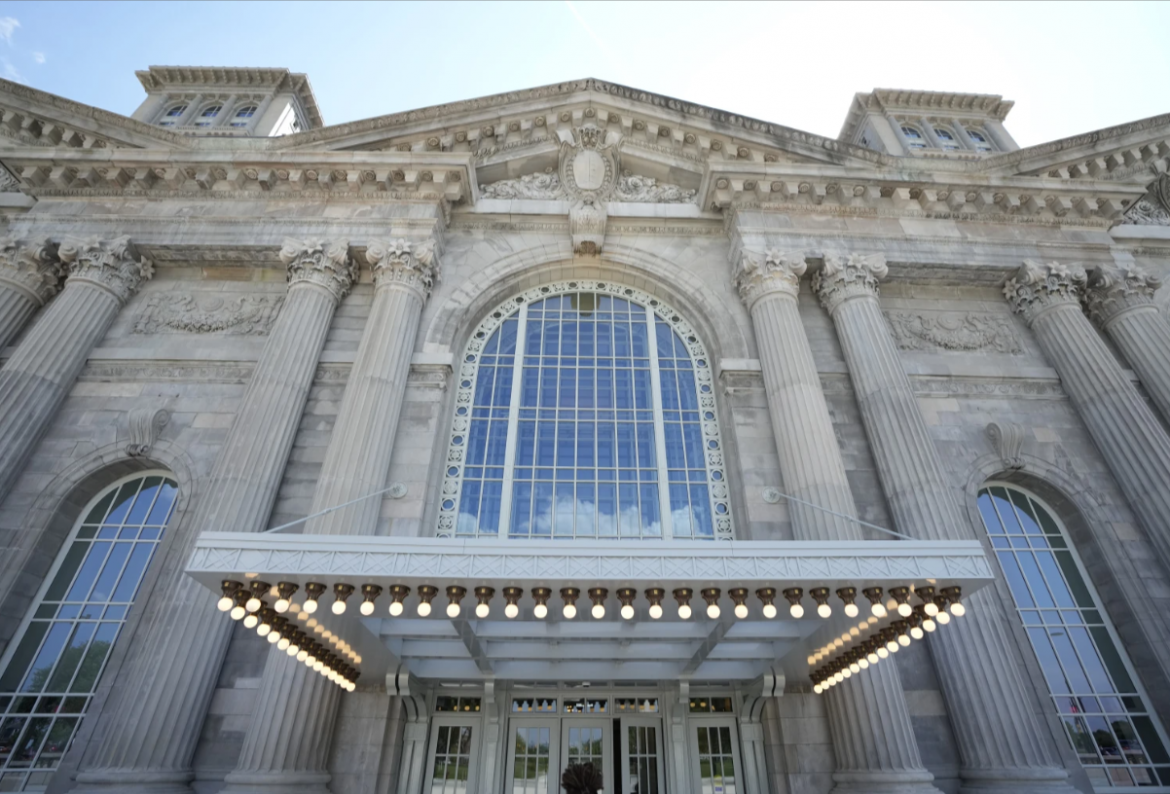For years, the hulking, scavenger-ravaged structure of the Michigan Central Station cast an ominous shadow over Detroit’s Corktown neighbourhood, serving as a grim reminder of the city’s troubled past. But today, this historic edifice stands tall as a beacon of hope, its renaissance a testament to the resilience and determination of a city that refused to be defined by its struggles.
In a monumental undertaking that spanned six years and millions of dollars, Ford Motor Company has meticulously restored the once-blighted train station, transforming it into the centrepiece of a 30-acre mobility innovation district. The restoration effort was nothing short of epic, with over 3,100 workers dedicating 1.7 million hours of labour to breathe new life into the century-old, 500,000-square-foot behemoth.
The sheer scale of the restoration is staggering, with every facet of the project reflecting the unwavering commitment to reviving this architectural marvel. From the restoration of 29,000 Guastavino tiles in the Grand Hall to the laying of 8.6 million miles of new grout across the 21,000-square-foot ceiling, no detail was spared. The project also saw the restoration or replication of 8 million bricks, 23,000 square feet of marble flooring, and 90,000 square feet of decorative plaster.
But the transformation went beyond mere aesthetics. The basement, once flooded with 3.5 million gallons of water, was drained, and a staggering 300 miles of electrical cables and wiring, along with 5.6 miles of plumbing, were installed, breathing new life into the structure.
For Bill Ford, the automaker’s executive chair and great-grandson of legendary founder Henry Ford, the restoration of Michigan Central Station represents far more than just a building project. “It was always my hope that this project would be a catalyst for moving the city and our industry together into the future,” he told The Associated Press.
And indeed, the train station’s resurrection is inextricably linked to Detroit’s own journey from despair to renewal. Once a symbol of the city’s decline, the station now stands as a testament to its resilience, a metaphor for the Motor City’s ability to rise from the ashes and reclaim its place as a hub of innovation and progress.
The Michigan Central Station is poised to become a hub for mobility projects, nurturing and developing cutting-edge transportation and mobility ideas that will shape the future. With the potential to create thousands of tech-related jobs, the station and its surrounding innovation district are expected to attract top talent from around the world, accelerating southeastern Michigan’s burgeoning innovation economy.
“It’s really an attraction play. It’s about talent,” said Sandy Baruah, President and Chief Executive of the Detroit Regional Chamber. “It’s about the future, not about the past.”
The station’s rebirth is already catalysing a wave of revitalisation in the surrounding area. Restaurants, new hotels, and other service-industry businesses are flocking to Corktown and the broader innovation district, breathing new life into the once-neglected neighbourhood.
Moreover, state officials have announced three proposed housing development efforts intended to meet the growing demand for housing around Michigan Central, further fueling the area’s transformation.
For Mayor Mike Duggan, whose administration has guided Detroit back to respectability since the city’s 2014 exit from bankruptcy, the reopening of Michigan Central Station holds profound significance. “I’ve been waiting 40 years for this day, and so have all long-time Detroiters, so it’s going to be very special,” he said.
Indeed, the abandoned train station was once the national symbol of Detroit’s decline and bankruptcy. But now, as Duggan notes, “the fact that not only has the city come back, but that the train station has come back in such a spectacular way and the place where we’re going to be designing the automobiles of the future, it’s now about the future, not about the past.”
The rebirth of Michigan Central Station coincides with a broader renaissance in Detroit, as the city seemingly turns the corner from national punchline to national attraction. Nearly a decade after exiting its embarrassing bankruptcy, the Motor City has stabilised its finances, improved city services, stemmed population losses, and made significant strides in cleaning up blight across its 139 square miles.
Detroit is now a destination for conventions and meetings, with the city recently setting an attendance record for the NFL draft, as over 775,000 fans descended downtown for the three-day event.
“The buzz about Detroit is very different nationally,” Bill Ford observed, adding that a project like Michigan Central Station’s restoration will “really put an exclamation on that.”
As Detroit continues to reinvent itself, the city can now offer prospective residents and businesses a compelling proposition: the opportunity to “work and play and live, and also live affordably,” in a city that has risen from the ashes, its iconic train station standing as a powerful symbol of its remarkable journey from decay to dazzling renaissance.



